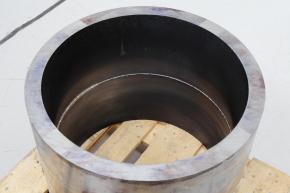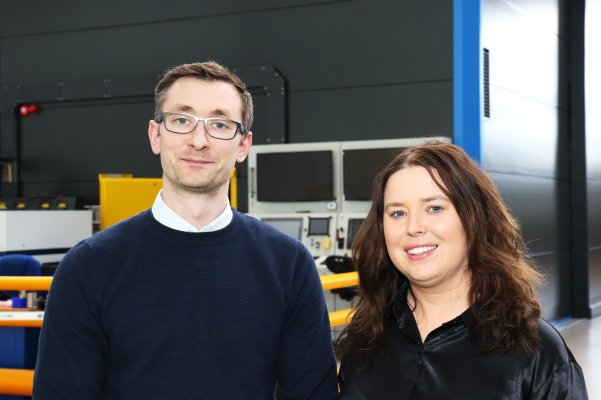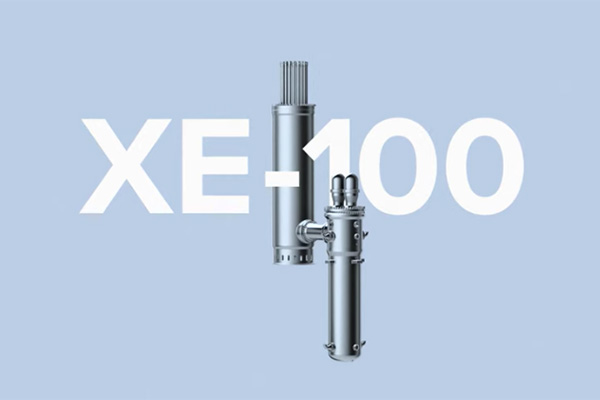Nuclear AMRC welding engineers have demonstrated the power of the centre’s giant new electron beam chamber by joining large steel cylinders in minutes rather than days.
 The test, designed to highlight the potential time savings of electron beam welding to industrial partners, involved two S355 carbon manganese steel pipes of 600mm diameter and 45mm wall thickness.
The test, designed to highlight the potential time savings of electron beam welding to industrial partners, involved two S355 carbon manganese steel pipes of 600mm diameter and 45mm wall thickness.
Joining such cylinders with a weld as thick as the wall would take up to four days using conventional arc welding techniques, because of the need to apply multiple layers of weld and carry out repeated non-destructive testing (NDT) to guarantee the weld quality.
Electron beam welding, by contrast, can join very thick metal sections with a single weld which needs just one final inspection. Nuclear AMRC engineers have achieved welds of up to 100mm thick in nuclear-grade steel using the small ProBeam K25 chamber.
The centre’s new ProBeam K2000 chamber – believed to be the largest e-beam chamber available for research anywhere in the world, with a vacuum chamber volume of over 200m3 – completed the cylindrical weld in less than four minutes.
The weld quality is at least as good as that of a traditional weld, notes Bernd Baufeld, power beam technology lead at the Nuclear AMRC.
“For certain materials, electron beam welding can avoid hydrogen and oxygen related problems since it is done in vacuum,” he says. “Another advantage is that arc welding requires complex weld preparation, while electron beam just requires a simple square prep.”




